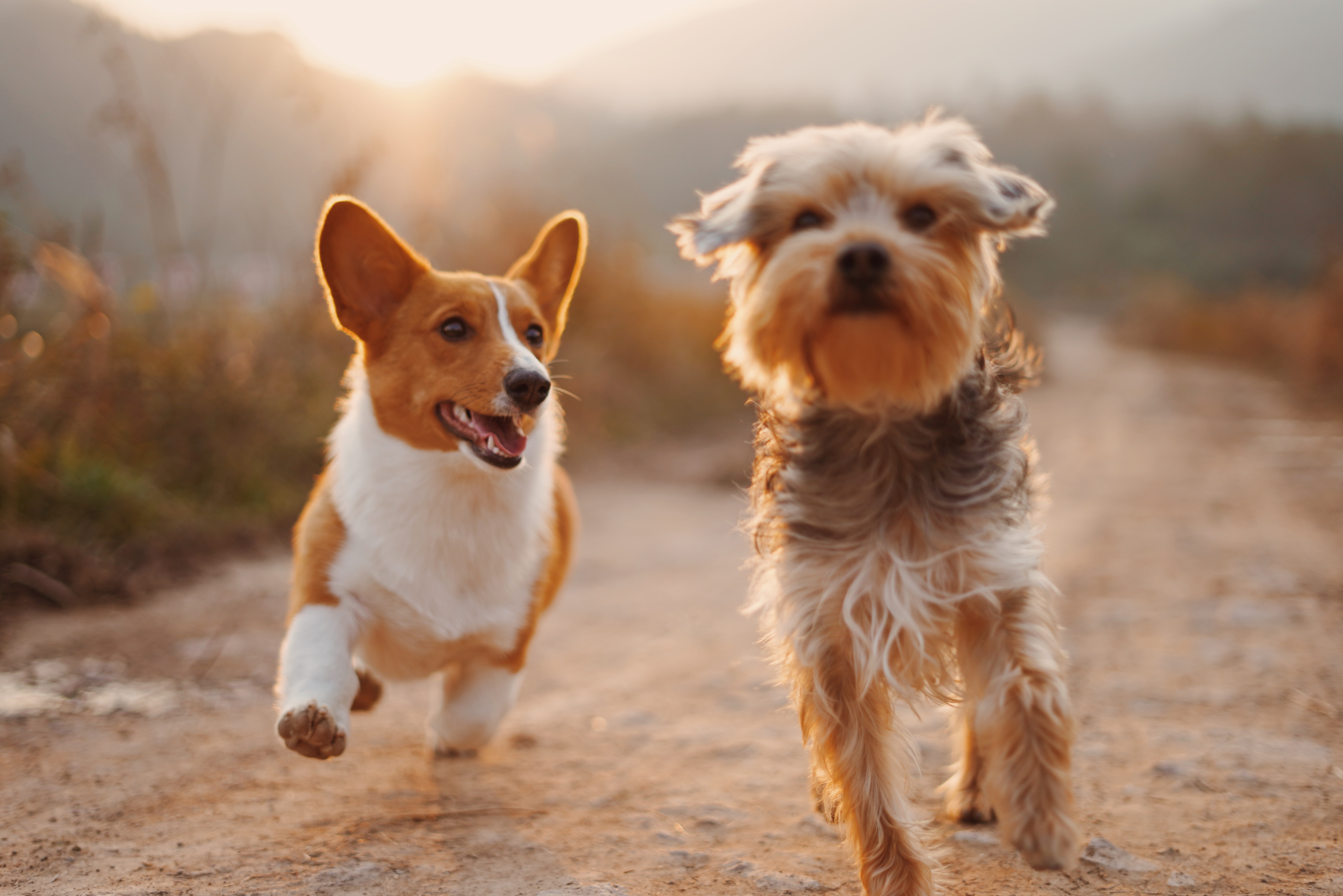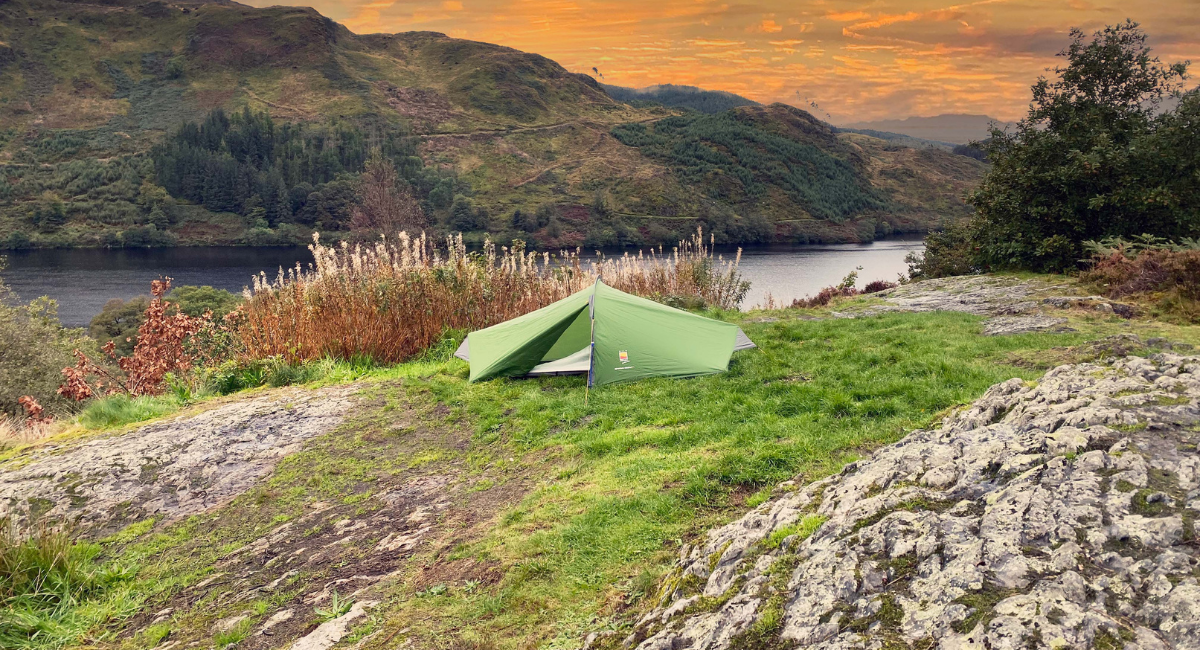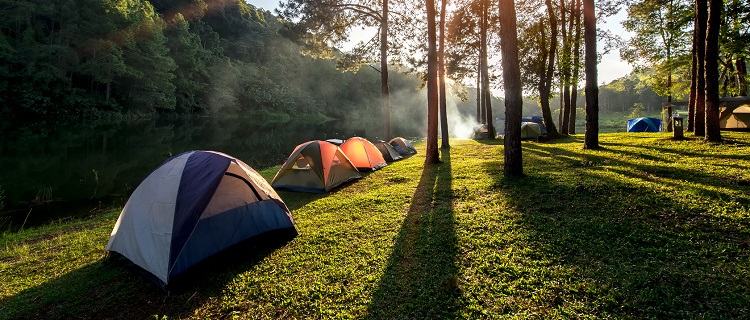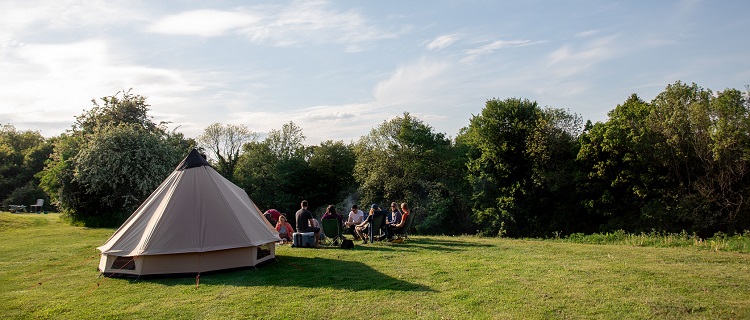Camping With Dogs
Our Tops Tips
Camping with your dog is one of life’s greatest adventures. Whether you’re pitching a tent in the Lake District or parking up your campervan on the Cornish coast, sharing the great outdoors with your furry friend creates memories to last a lifetime. But to make your trip safe, enjoyable, and stress-free, a little planning goes a long way.
Checklist: What to Do Before You Go
- Book a dog-friendly campsite
- Check your dog’s vaccinations and flea/tick treatments
- Update ID tag and microchip details
- Pack all essential gear
- Research local vets and save their contact details
- Check local rules on dog access and leads
- Practice recall and lead walking
- Test your dog’s reaction to the tent at home
- Plan dog-friendly walks and activities
- Pack extra food, water, and treats

How to Choose a Dog-Friendly Campsite
Not all campsites are created equal when it comes to dogs. Here’s how to find the perfect spot:
What to Look For
- Dog-friendly policies → Check if dogs are allowed, and if there are restrictions on numbers or breeds.
- Facilities → Look for dog showers, enclosed exercise fields, and dog waste bins.
- Nearby walks → Proximity to dog-friendly trails, beaches, or woodlands is a big plus.
- On-site rules → Most UK campsites require dogs to be on a lead (usually under 2m) and supervised at all times.
- Local amenities → Is there a vet nearby? Are there pubs or cafes that welcome dogs?
Top Dog-Friendly Campsite Chains
- Camping and Caravanning Club
- National Trust campsites
- Cool Camping
- Pitchup.com (use the ‘dogs allowed’ filter)
Best Dog-Friendly Camping Destinations in the UK
Lake District
- Why → Miles of dog-friendly trails, lakes for swimming, and welcoming pubs.
- Top Campsite → Low Wray (National Trust)-lakeside pitches and secure dog fields.
Cornwall
- Why → Dog-friendly beaches (like Perranporth), coastal walks, and relaxed campsites.
- Top Campsite → Treyarnon Bay Club Site.
Scottish Highlands
- Why → Wild camping opportunities, lochs for swimming, and vast open spaces.
- Top Campsite → Glen Nevis Caravan & Camping Park.
Yorkshire Dales
- Why → Rolling hills, dog-friendly pubs, and scenic walks.
- Top Campsite → Hawes Caravan Club Site.
Brecon Beacons
- Why → Mountain walks, waterfalls, and dog-friendly attractions.
- Top Campsite → Pencelli Castle Caravan & Camping Park.

Essential Gear Checklist
Sleeping & Shelter
Food & Water
- Collapsible bowls
- Enough food for the trip, plus extra
- Treats and chews
- Portable water filter (for wild camping)
Safety & Identification
- Reflective harness and lead
- LED collar or clip-on light
- Up-to-date ID tag with your mobile number
- GPS tracker (for adventurous dogs)
Health & Hygiene
- Dog first-aid kit (tick remover, antiseptic wipes, bandages)
- Poo bags (biodegradable preferred)
- Flea and tick treatment
- Paw balm (for rough terrain)
- Dog towel
Top Tips for Camping With Dogs
| Tip | How |
|---|---|
| Practice at Home | If your dog is new to camping, set up your tent in the garden for a trial night. This helps them get used to the new environment and sounds. |
| Stick to Your Routine | Feed and walk your dog at their usual times to help them settle. |
| Keep Them Cool | Pitch your tent in the shade, avoid midday walks, and provide plenty of water. Watch for signs of heatstroke. |
| Never Leave Your Dog Unattended | Tents and cars can heat up quickly, and unfamiliar surroundings can be stressful. Always supervise your dog. |
| Respect Wildlife and Livestock | Keep your dog on a lead around farm animals and wildlife. Practise recall commands and use a long line if needed. |
| Check Local Rules | Some beaches or trails have seasonal dog bans-always check before you go. |
| Prepare for Emergencies | Know the location of the nearest vet and have their number saved on your phone. |
Sharing a Tent With Your Dog
Selecting the right tent is one of the most important decisions you’ll make when camping with your dog. The right shelter ensures everyone sleeps comfortably, stays dry, and has enough room to relax after a day’s adventure.
Floor Space
Choose a tent that offers enough floor space for you, your dog, and your camping gear. If you have a large dog or multiple dogs, consider upsizing to a tent designed for one or two more people than are actually in your party. For example, if you’re camping solo with a Labrador, a two- or three-person tent gives you both room to stretch out.
Vestibule or Porch Area
A tent with a generous vestibule or porch is a real asset. This covered area can be used for:
- Storing muddy boots, wet coats, and your dog’s gear
- Wiping down paws before entering the main sleeping area
- Feeding your dog under shelter in bad weather
- Providing a shaded spot for your dog to relax during the day
Durability and Dog-Friendly Features
- Strong Materials → Look for tents with tough, ripstop fabrics and durable ground sheets that can withstand claws and the occasional dig.
- Easy Access → Tents with wide doors or multiple entry points make it easier for you and your dog to come and go, especially during nighttime toilet trips.
- Ventilation → Good airflow is essential to keep the tent fresh and prevent condensation, especially with a warm dog inside. Mesh panels and adjustable vents are a plus.
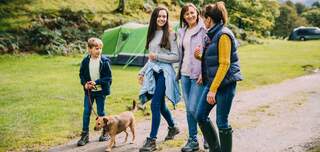
Camping With Puppies or Older Dogs
Puppies
- Make sure they’re fully vaccinated before camping.
- Start with short trips and familiarise them with the tent at home.
- Bring chew toys for teething.
Older Dogs
- Choose campsites with level ground and short walks.
- Bring an orthopaedic bed for comfort.
- Watch for signs of stiffness or fatigue.
FAQs
No-dogs can overheat or become distressed. Always supervise your dog.
Yes, especially in Scotland. Always follow the Scottish Outdoor Access Code and leave no trace.
Ensure your dog’s microchip and ID tag are up-to-date. Contact local vets, dog wardens, and use social media to spread the word.
Low Wray (Lake District), Treyarnon Bay (Cornwall), Glen Nevis (Scottish Highlands), and Hawes (Yorkshire Dales) are all highly rated.
Most UK sites prohibit them; use a fixed lead under 2m.
Use AllTrails’ “dog-friendly” filter or local OS Maps.
Related Articles

Let us know you agree to cookies
We use marketing, analytical and functional cookies as well as similar technologies to give you the best experience. Third parties, including social media platforms, often place tracking cookies on our site to show you personalised adverts outside of our website.
We store your cookie preferences for two years and you can edit your preferences via ‘manage cookies’ or through the cookie policy at the bottom of every page. For more information, please see our cookie policy.


